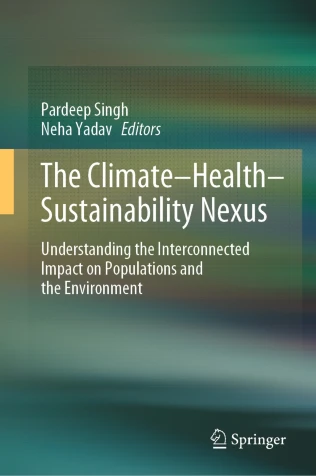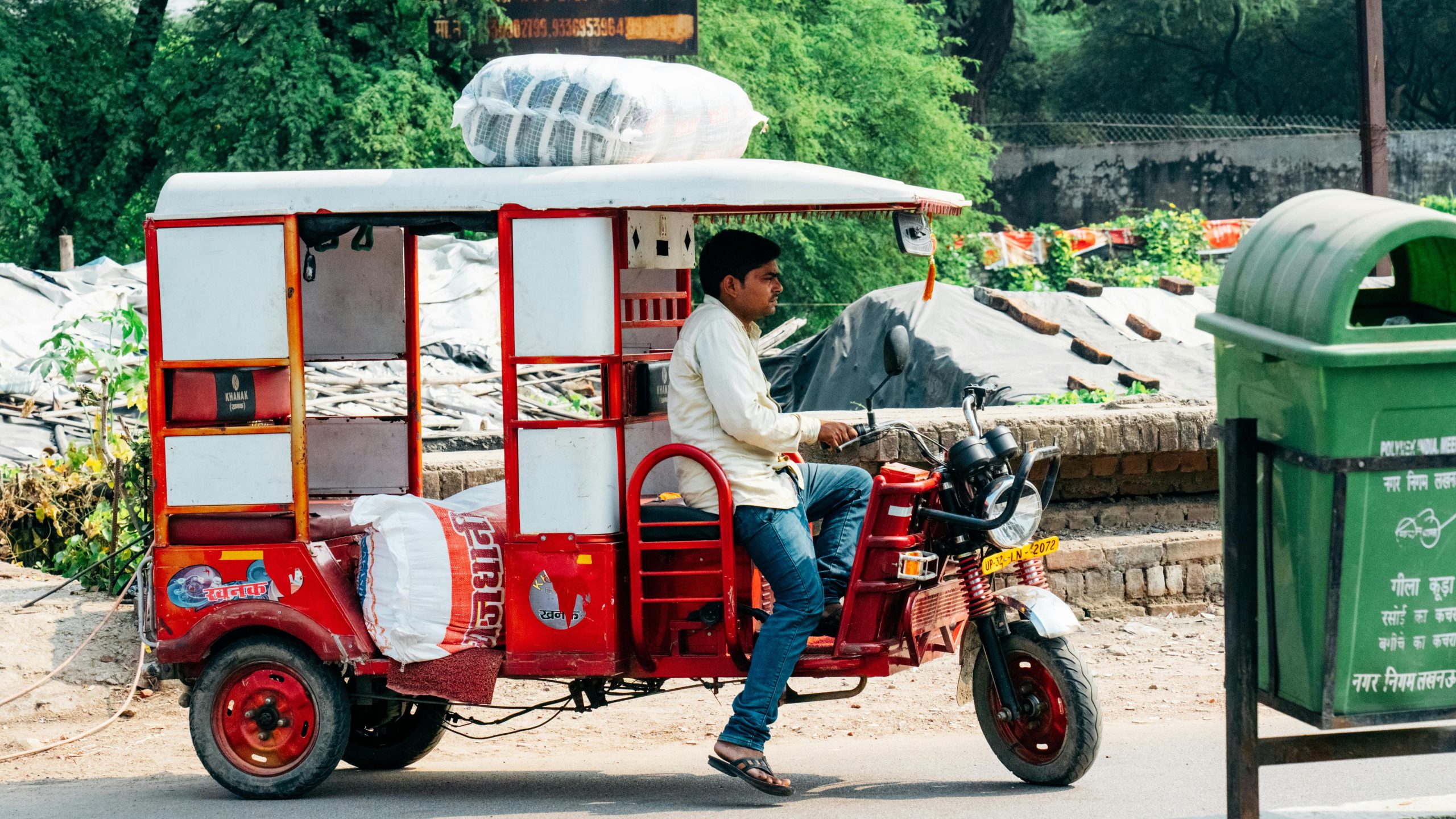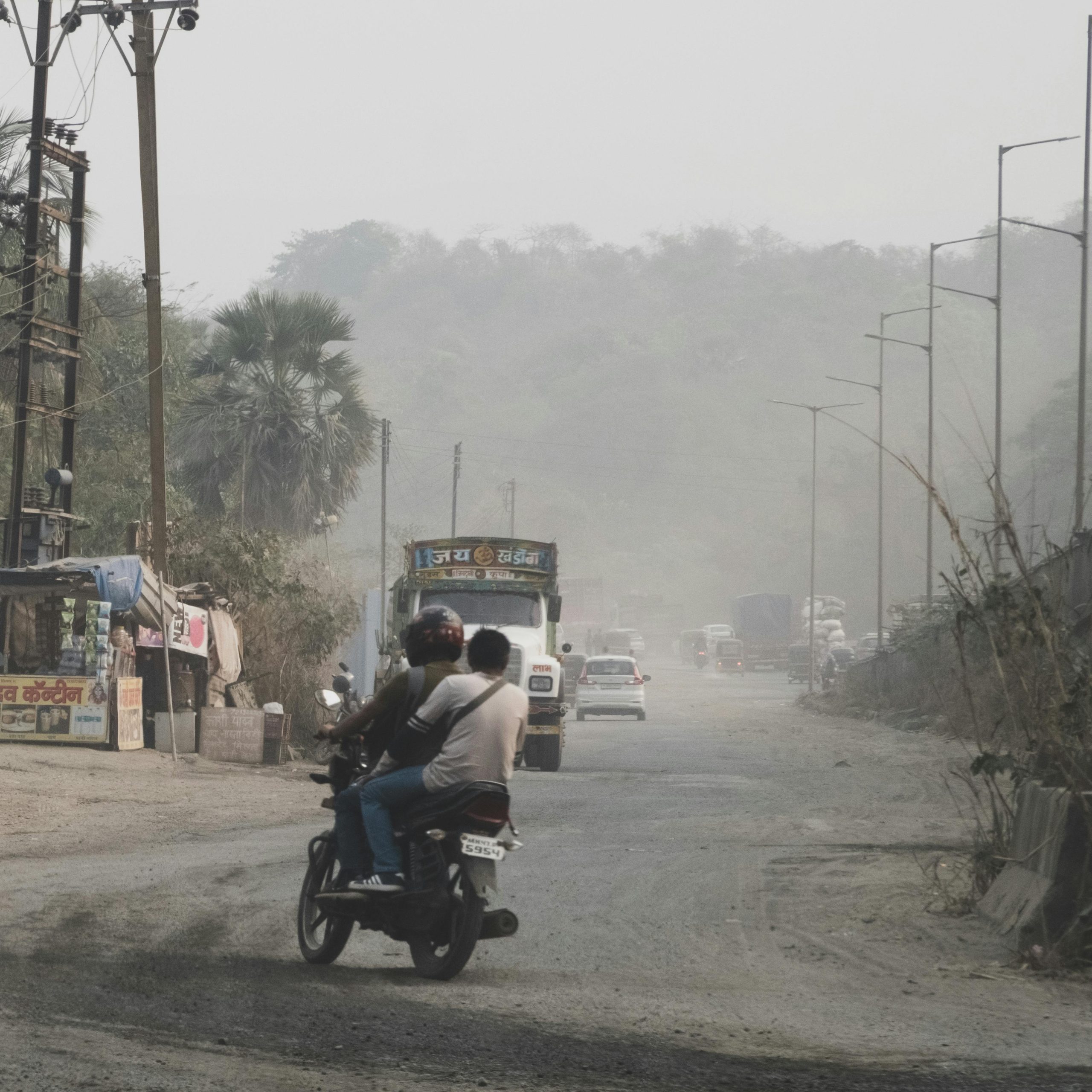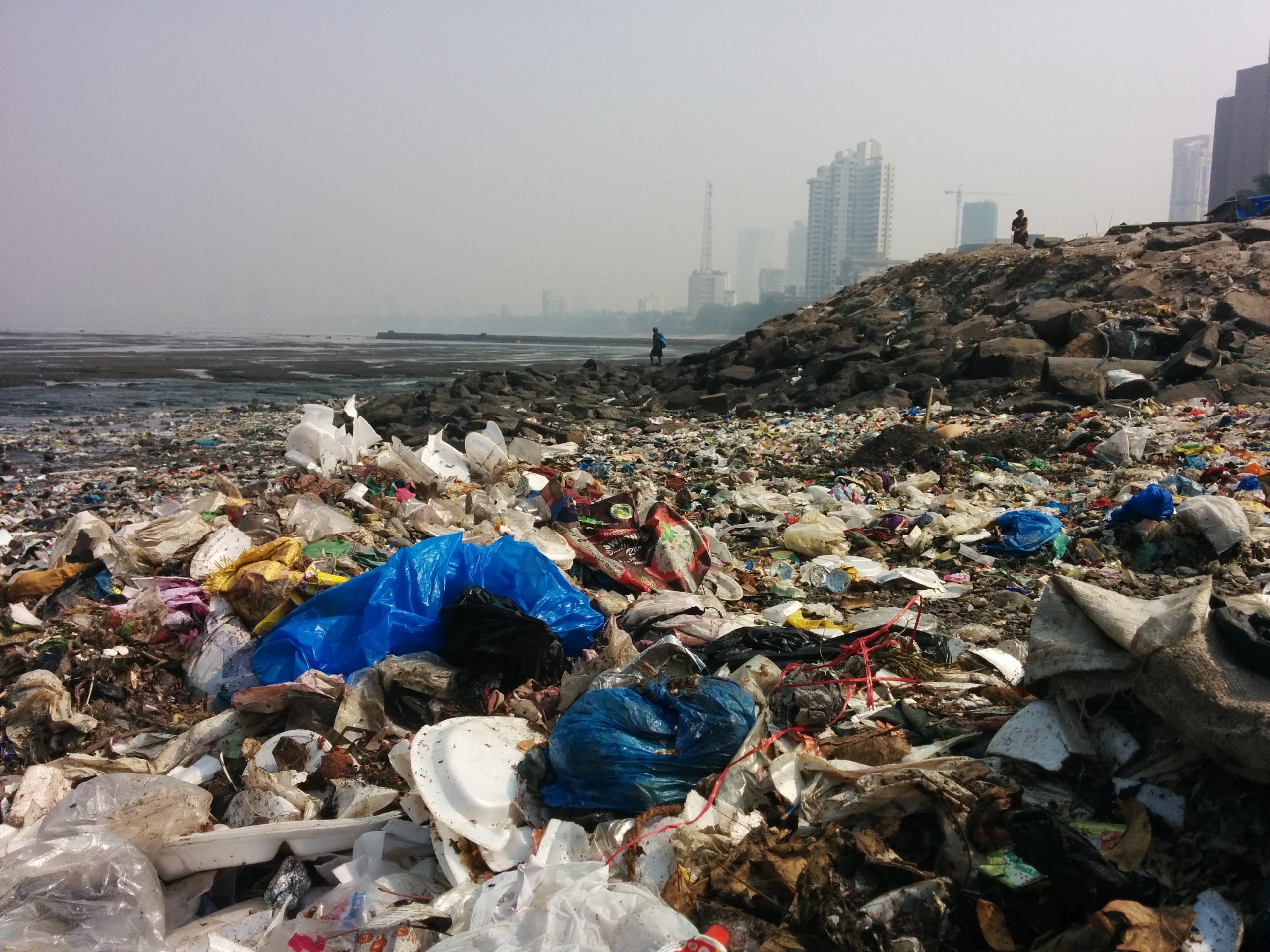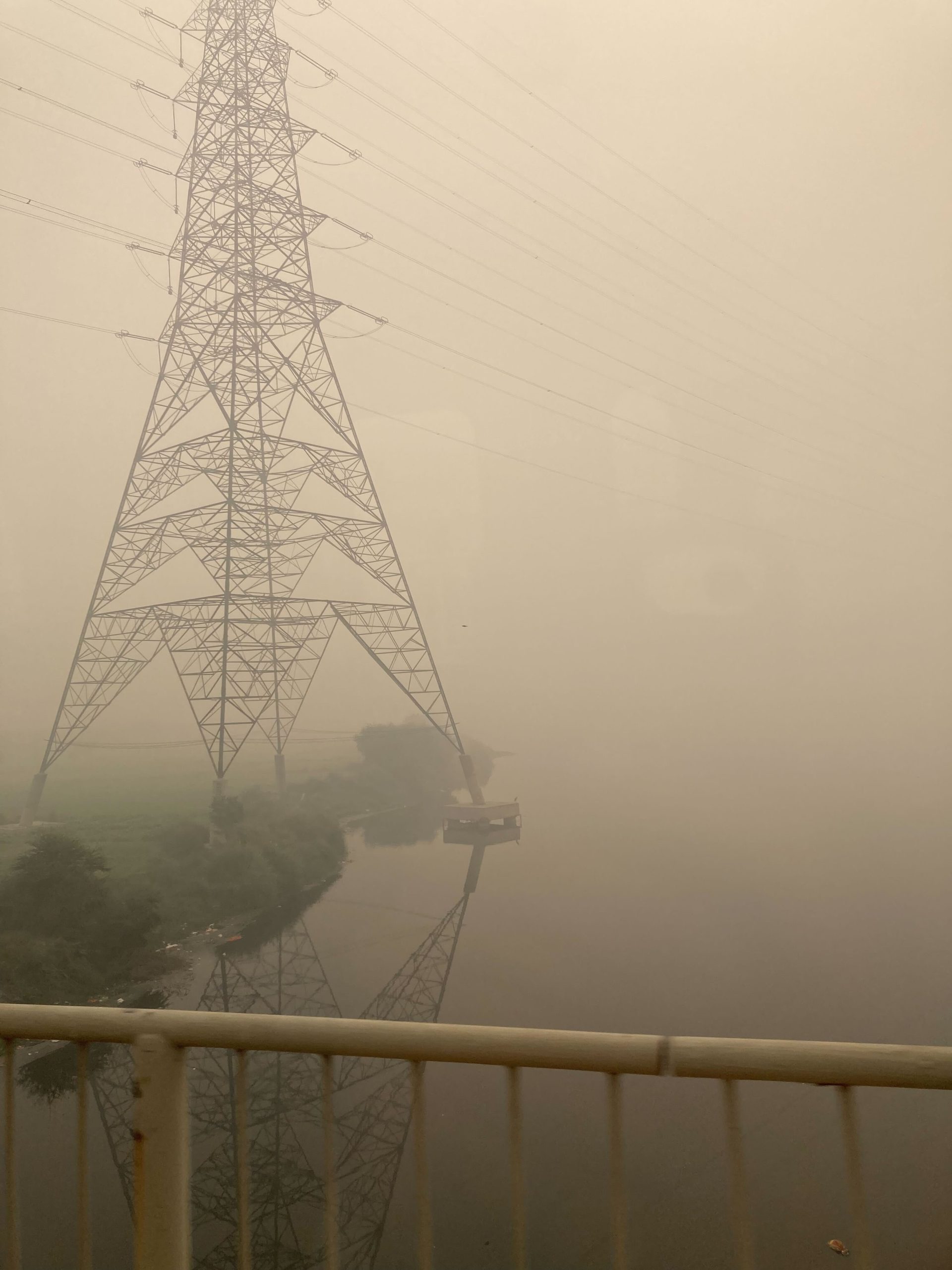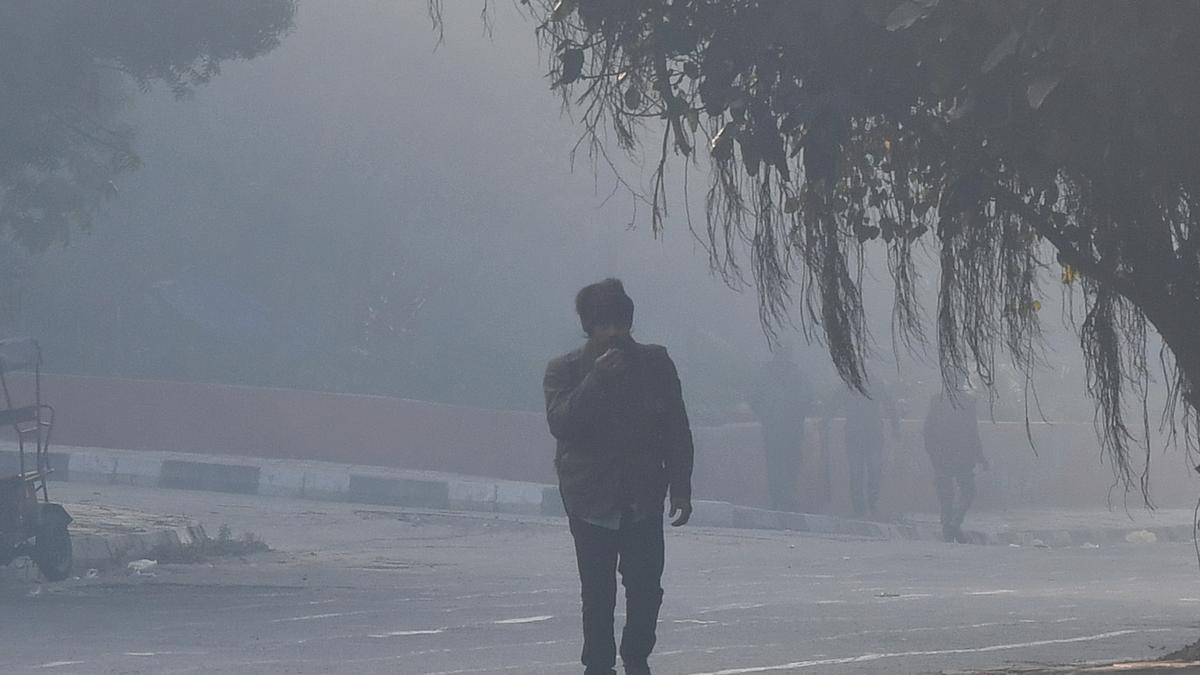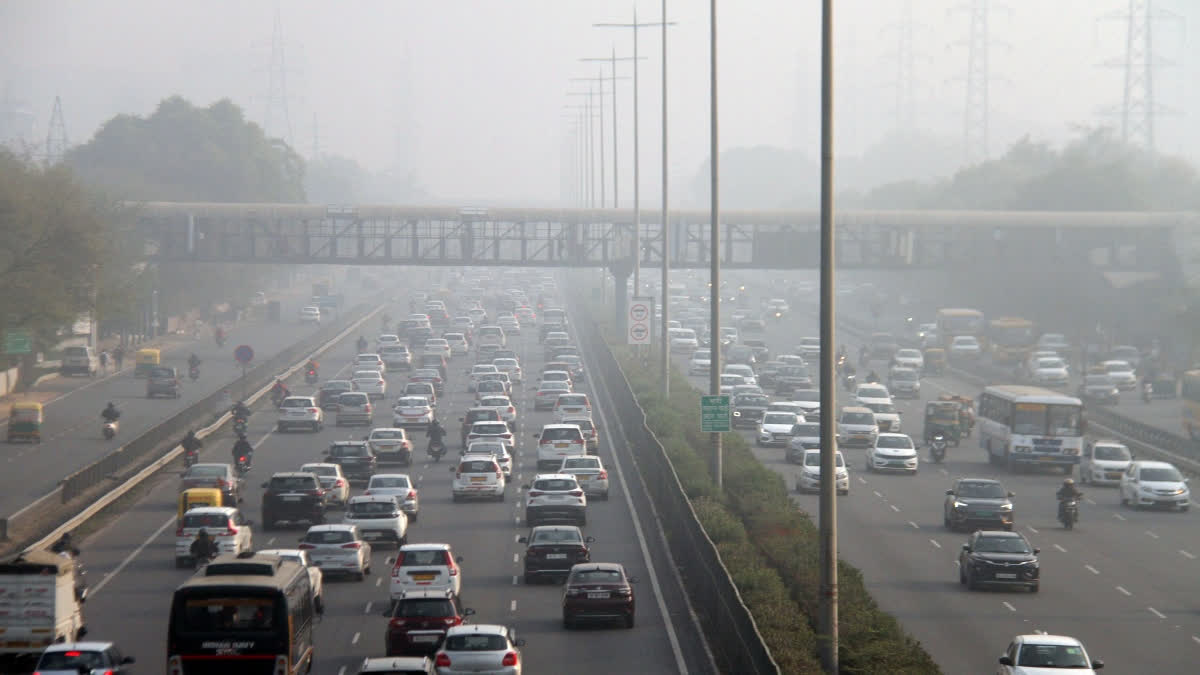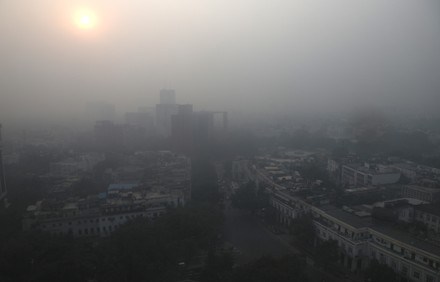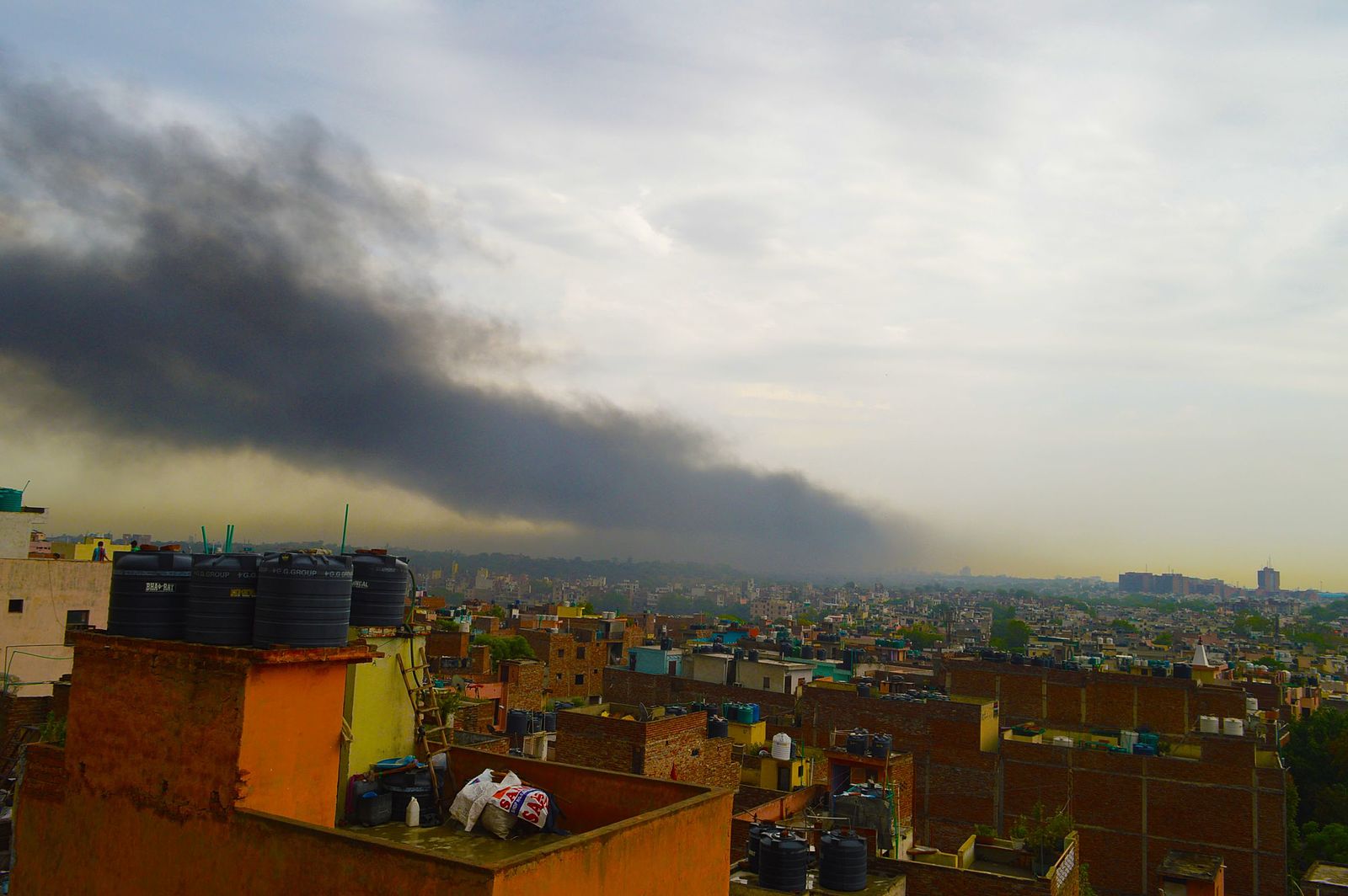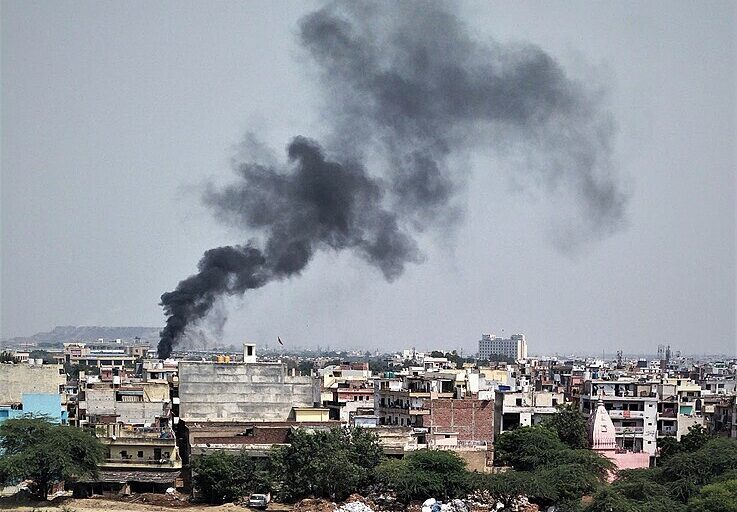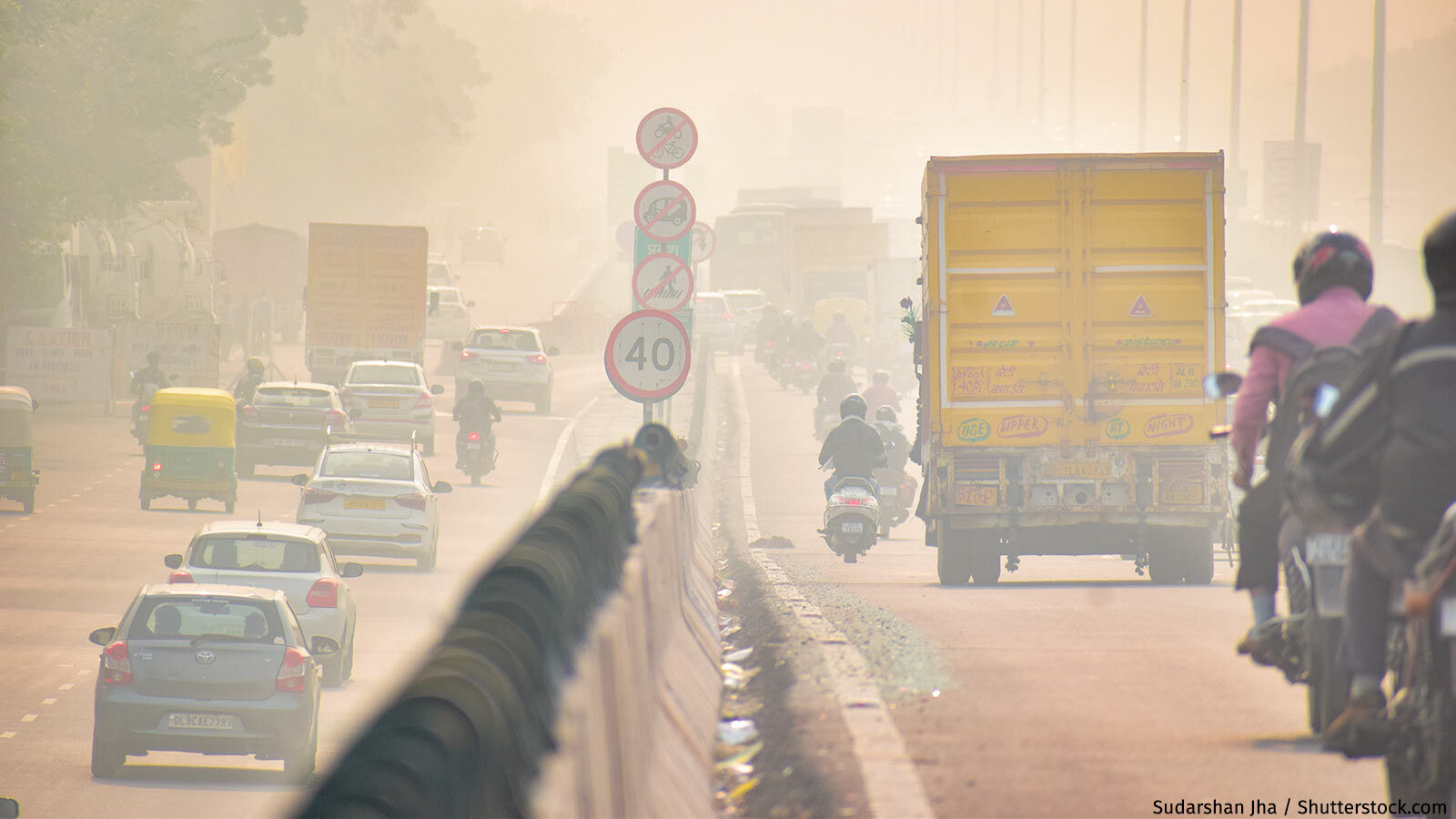Research area: Environmental Governance and Policy
Thirty and Still Dirty: Why Do Delhi’s Roads Remain So Polluted?
Delhi is frequently listed as one of the most polluted cities in the world. It is also riddled with potholed roads, suffers from severe traffic congestion, and is home to a massive vehicular population. This is especially hard to comprehend since road dust and vehicular emissions (hereafter referred together as road-based emissions) have been the focus of anti-air pollution action for about three decades.
A 1997 white paper on Delhi’s air pollution identified the transport sector as the chief culprit, estimating that it accounted for 72 percent of ambient air pollution. Since then, Delhi’s tortuous tryst with its transportation sector has seen many twists and turns, such as the conversion of buses and autos to CNG, the poorly executed bus rapid transit system, the sporadically implemented odd-even road rationing program, the introduction of the Delhi metro, the recent leap to Bharat Stage (BS) VI fuel and vehicle emission norms, incentives for the adoption of electric vehicles (EVs), and the introduction of schemes for vehicle scrappage.
At the national level, around 67 percent of funds under the National Clean Air Programme (NCAP) have been spent on road dust, and 14 percent has been spent on vehicular pollution. As of November 2024, Delhi had utilised just 32 percent of the funds allocated under the NCAP, amounting to Rs 13.56 crores. As per a submission made to the National Green Tribunal1, these funds were meant primarily for activities targeting road-based emissions such as purchasing mechanical sweepers, pothole repair machines, end-to-end paving, and creating green buffers along roads. Yet, road-based emissions continue to remain a significant contributor to ambient air pollution.
How bad are road-based emissions?
Within the transport sector, much of the focus has rightly been on exhaust or tailpipe emissions, as fine particulate matter (PM2.5) – particularly those generated by the combustion of fossil fuels – poses severe risks to human health due to their ability to penetrate deep into the respiratory and circulatory systems, causing long-term adverse effects.
Several source apportionment studies have investigated the contribution of road-based emissions to overall ambient air pollution concentration in Delhi over the years. Guttikunda et al. (2023) summarised 11 different studies between 1990 and 2022 and concluded that vehicle exhaust from petrol, diesel, and gas combustion accounted for 10 to 30 percent of annual average PM2.5 concentrations, making it one of the four largest sectoral sources contributing to Delhi’s poor air. Another of the four major sources is dust from roads and construction, further highlighting the role of road-based emissions.
The health impact of road-based emissions is even worse than is suggested by source apportionment studies. This is because the exposure to these sources is much higher while commuting in the city. As Figure 1 shows, compared to ambient PM2.5 concentrations, commuters across most modes of travel in Delhi are exposed to 10 to 40 percent higher levels of PM2.5. This makes road-based emissions even more harmful when taken together with the long commute times prevalent in the city.
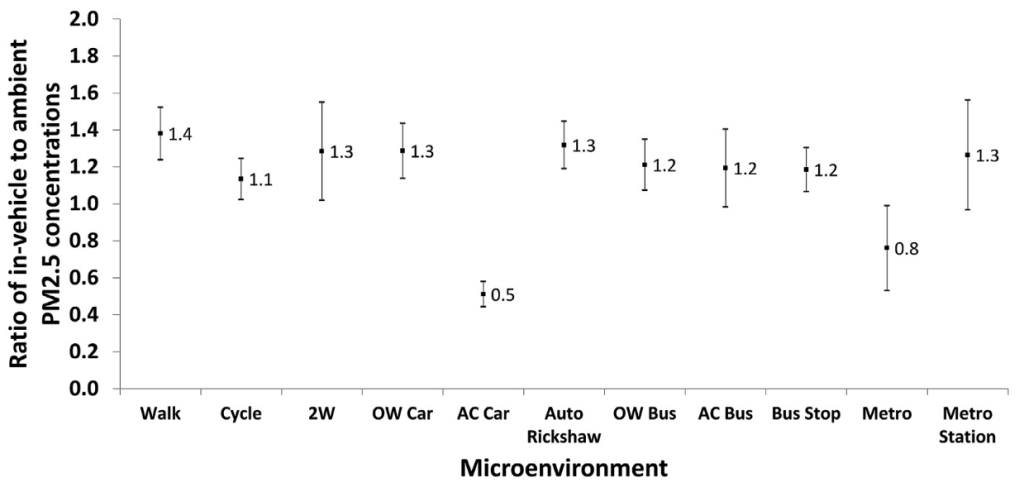
A tale of historical logjams and emergent challenges
The seemingly intractable nature of road-based emissions is due to several different factors:
1. Delhi roads are poorly constructed and maintained.
Road dust is composed of a complex mixture of materials, including soil erosion, vehicular wear and tear, degraded road materials, construction debris, degraded plastics, biomass residues, and industrial waste. It constitutes a significant portion of the coarser PM10 and a smaller but more toxic fraction of PM2.5. Vehicles grind and wear down road surfaces, releasing particles, while wind and vehicle turbulence resuspend settled particles. Seasonal factors, such as the low humidity during winters reduce moisture that otherwise settles dust, leading to higher suspension rates. Further, ongoing construction activities, poorly maintained roads, potholes, unregulated waste dumping, and insufficient street cleaning amplify road dust generation.
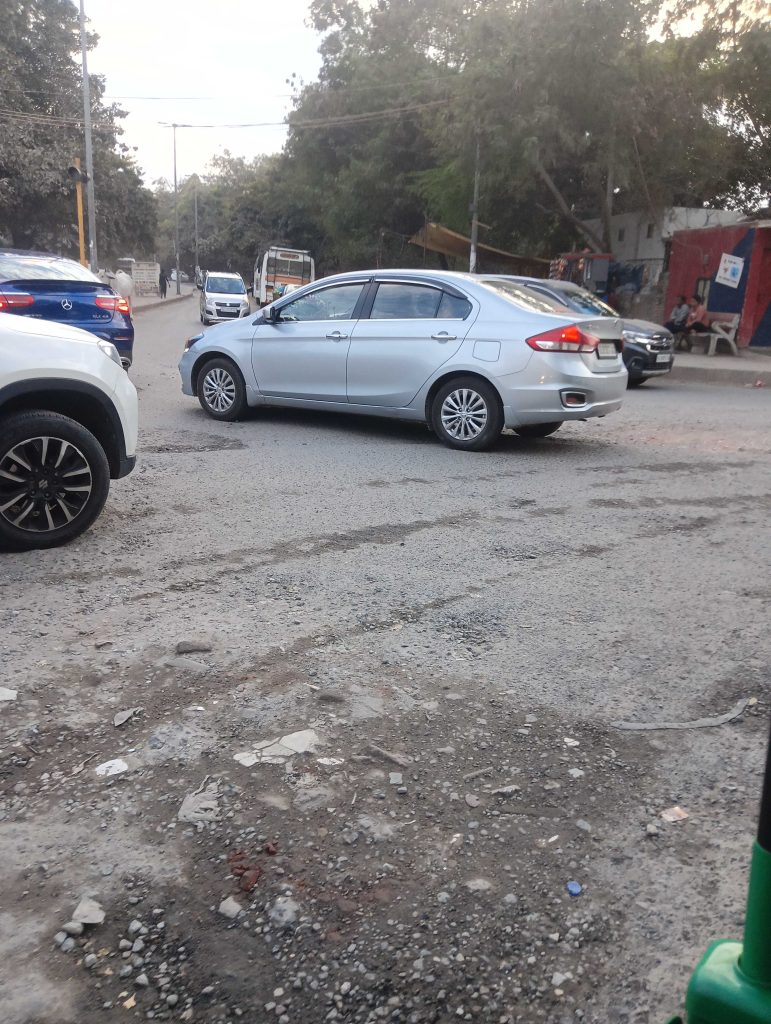
Over the last few years, numerous promises to repair and redesign roads have been made (Figure 2). However, these commitments have yet to result in any significant change. Delhi’s roads continue to face persistent issues, including unpaved roads left by service agencies, numerous potholes, cracks, and craters caused by poor maintenance, uneven surfaces, and inadequate drainage leading to waterlogging. Delays in repair approvals and substandard resurfacing quality further exacerbate these problems. In 2022, 1,637 accidents and 320 fatalities were caused due to poor-quality roads in the city.
Among these issues, waterlogging accelerates the deterioration of bituminous pavement layers, and many roads lack proper slopes to drain rainwater. Bituminous blacktop cannot withstand standing water effectively as its adhesion to underlying layers is weak, and this leads to surface patches peeling off and forming new potholes. Moreover, multiple layers of blacktop carpeting raise the height of the road surface thereby adversely affecting drainage, which allows rainwater to infiltrate sewer lines through manholes in depressions caused by uneven resurfacing. Furthermore, the city’s drainage system managed by multiple agencies (mainly the Municipal Corporation of Delhi and the Public Works Department) is designed to handle a limited amount of rain, leading to clogged drains that exacerbate waterlogging.
2. The Delhi Metro is not enough to shift the city away from private vehicle ownership.
Prior to 2022-23, Delhi had over 1.4 crore registered vehicles. Now, that number has reduced to about 80 lakhs, due to the deregistration of old and polluting vehicles. Since 2001, the personal vehicle segment has seen high growth, with 92.6 percent of all registered vehicles belonging to this category in 2023. Taxis and e-rickshaws have grown very sharply, while autorickshaws have plateaued and buses have declined (Table 1).
| 2001 | 2023 | Percentage Change | |
| Population (in lakhs) | 138 | 213 | 54% |
| Total Registered Vehicles | 34,56,579 | 79,45,596 | 130% |
| Cars & Jeeps | 9,20,723 | 20,71,115 | 125% |
| Motorcycles & Scooters | 22,30,534 | 52,94,900 | 137% |
| Auto Rickshaws | 86,985 | 93,654 | 8% |
| Taxies | 18,362 | 83,278 | 354% |
| Buses2 | 41,483 | 17,232 | -58% |
| Goods Vehicles | 1,58,492 | 2,65,739 | 68% |
| Ambulances | – | 1,172 | – |
| E-Rickshaws | – | 1,18,506 | – |
| Deregistered Vehicles | – | 62,59,2143 | – |
The preference for personal vehicle ownership in Delhi is clear. Apart from being seen as a means to boost social prestige, personal vehicles are almost unavoidable in a city where public transport and last-mile connectivity are very unreliable. For example, when considering intracity bus transport – comprising Delhi Transport Corporation (DTC) and licensed private bus services – the number of buses has grown by a mere 16 percent over 22 years. After nearly 3 decades and several government initiatives, Delhi has yet to meet the target of 10,000 buses set by the Supreme Court in 1998. In fact, on a per capita basis, there were 25 percent fewer buses in 2023 than in 2001 (Table 2). Given that only 22 percent of Delhi’s population moves in private cars, car ownership will continue to increase and the recent de-registration drive is unlikely to have a lasting effect.
| 2001 | 2023 | Percentage Change | |
| DTC buses | 3524 | 4346 | 23% |
| Cluster/Blueline buses | 2685 | 2841 | 6% |
| Total buses | 6209 | 7187 | 16% |
| Buses per lakh population4 | 45 | 34 | -25% |
The Delhi metro is the largest metro rail network in the country, but it suffers from lower-than-expected ridership and is also unaffordable for many. Metro systems are very expensive to construct. They are great for travel over longer distances but are typically far more cumbersome to use for short-distance travel. Metro stations are almost always not accessible without relying on some other form of paratransit, particularly due to the poor condition of footpaths in the city. In the absence of reliable non-motorised transport options such as walking or cycling, as well as a weak bus service, e-rickshaws have become the city’s primary para transit mode, offering cheap last-mile connectivity. The relatively high transaction cost of getting to and from a metro station has made it a less attractive option for those who can use private vehicles or taxis.

3. Not just more vehicles, but also larger and heavier vehicles
(a) The increase of freight
Road transport, predominantly facilitated by trucks, carries most of India’s goods, accounting for 70 percent of the current domestic freight demand. With the continued growth in road freight travel, the truck population is expected to rise significantly at the national level, from 4 million in 2022 to nearly 17 million by 2050. According to a 2020 estimate, approximately 1.69 lakh freight vehicles enter Delhi daily, and as per another estimate from 2018, trucks were the most polluting vehicle category in the city.
A pervasive issue is truck overloading. Overloaded trucks exert excessive pressure on road surfaces, accelerating their deterioration and shortening the life of roads. This not only increases maintenance costs but also creates significant safety risks for all road users. Research indicates that pavement damage increases exponentially with axle load, such that if the axle load doubles, the damage to the road surface increases by a factor of 8. Major factors contributing to overloaded vehicles include economic pressure on truck operators, lack of enforcement and monitoring, and inadequate infrastructure such as weigh stations.
Several steps have been taken over the years to address the overloading of freight. A Supreme Court judgment from 2018 mandates that any truck exceeding 10 percent of its allowed weight limit will face a fine of ₹20,000 for the first tonne of excess weight and ₹2,000 for each additional tonne. Additionally, the judgment instructed state governments to establish weighing stations to monitor the weight of commercial vehicles. Last year, the Delhi government proposed to authorise traffic police to take action against overloaded goods vehicles, a power so far held by the transport department. The proposal seeks to reduce congestion and prevent polluting vehicles from entering the national capital region.
(b) The proliferation of SUVs
Sports Utility Vehicles or SUVs are now the dominant variant of cars in India5. Over 50 percent of all cars sold in 2024 were SUVs. While the exact number of SUVs in Delhi is difficult to determine, their popularity is a safe assumption to make. One key reason for the form factor’s success is its superior performance on uneven, potholed, and crowded Indian roads. These vehicles allow for a higher vantage, a smoother ride, and a perceived dominating road presence.
But it is these very virtues that make SUVs a problem. First, SUVs emit more air pollutants and carbon dioxide relative to other cars. They are heavier than sedans and hatchbacks and their tall profiles also make them less aerodynamic. This makes them burn more fuel per kilometre, which directly translates into increased air pollutant emissions. SUVs are such large emitters of CO2 worldwide that when placed alongside national emissions they rank 5th on the list. Second, SUVs are heavier, so they produce more non-exhaust emissions such as those produced from the road, tyre, and brake wear. Taken together, it forms a vicious cycle of increasing pollution and road wear caused by those who chose to circumvent those conditions by adopting SUVs in the first place. Third, in a city with an acute shortage of road and parking spaces, they take up an inequitably large share.
4. Vehicles are emitting more than they should
Over the years, vehicular emissions norms have been strengthened, with the latest BS VI standard being a significant improvement over the older BS IV. Further, older vehicles in Delhi must adhere to strict deregistration rules, allowing them to be used for only up to 10 (for diesel vehicles) to 15 (for petrol vehicles) years. Unfortunately, the rise of heavier personal vehicles – also known as autobesity – has the potential to reduce and even counteract such environmentally beneficial measures. This is because the recent shift to SUVs implies that despite the introduction of newer vehicles, they may not necessarily be as clean as intended. This does not mean that BS VI SUVs are dirtier than cars running on BS IV or older standards. In theory, it means that replacing a lighter but more polluting older car with a heavier but less polluting newer car is not likely to reduce emissions as much as replacing it with a lighter, or better yet, an electric car.
Ensuring that vehicles continue to run clean on roads has proven to be challenging as well. Vehicles operating under the latest BS VI emissions standards are polluting more than expected, with real-world emissions found to be as much as 14 times higher than the standard-approved limits. One key reason for this is that the only in-use emissions test for vehicles in India – known as the Pollution Under Control or PUC certification – does not even check for key pollutants such as PM2.5 or oxides of nitrogen.
5. The future must have both more EVs and fewer vehicles overall
Given this context, EVs have been rightfully identified as the key to significantly reducing transport emissions in Delhi. The benefits of eliminating tailpipe emissions cannot be understated, and the potential benefits to ambient air quality in the region due to a complete shift to EVs will be immense.
Yet, much like the Delhi metro or the CNG transition before it, it is important to remember that EVs are not the panacea. With renewable energy sources taking up more of a share in electricity generation, the displaced emissions from charging EVs are likely to reduce in the future but concerns about the ability of renewables to replace fossil energy as a base load source and thermal power plants delaying the installation of pollution control technologies will have to be addressed. EVs also produce non-exhaust emissions via road, tyre, and brake wear. The impacts of these emissions are still being understood, but emerging evidence suggests that they are very harmful.
In India, while a shift to EVs must be wholeheartedly embraced, it is also important to extract as much environmental gain as possible from this shift. Unfortunately, autobesity has found its way to the EV space as well – most new electric car launches are now SUVs. EV SUVs are doubly inefficient, because a larger vehicle needs a larger battery, adding to the mass and the energy inefficiency of the vehicle, and producing larger batteries adds to both the economic and environmental cost of the vehicle, as batteries are still quite expensive and are manufactured in ways that adversely impact the environment.
Crucially, EVs are designed to be direct substitutes for existing vehicles. Issues such as congestion, land use for parking and roads, and automobility-dependent urban sprawl will not be addressed by EVs. Electrification will do nothing to combat issues born out of car culture, such as the absence of good quality footpaths and dedicated cycling lanes. Thus, the electrification of vehicles must be integrated within a larger rethink of transportation design in the city.
The way forward: towards a more people-centric Delhi
So, what are some ways to reduce road-based air pollution in Delhi? They are largely no different than what needs to be done to improve the state of transportation in the city.
Irony has defined Delhi’s fight against its transport woes. Over the last 30 years, even as the city has tried multiple elaborate and expensive ways to fix these issues, it has become more car-centric and polluting than ever before. What is needed is a painful switch away from the philosophy of building a city that revolves around easing the flow of vehicular traffic. It is a design choice that is doomed to fail, as theoretically postulated by the Jevons paradox6 and as witnessed in practice by all of us. Building more roads always results in more vehicles.
City planners and policymakers must instead focus on building a city that is pedestrian and cyclist friendly. The metro rail network and city bus routes already provide the necessary connective tissue needed to stitch together longer distance travel in the city, and so it is the shorter distance commutes that cannot be effectively met by these modes that need to be addressed. Footpaths of sufficient width need to be provided on every road. Cycling lanes should be added wherever possible.
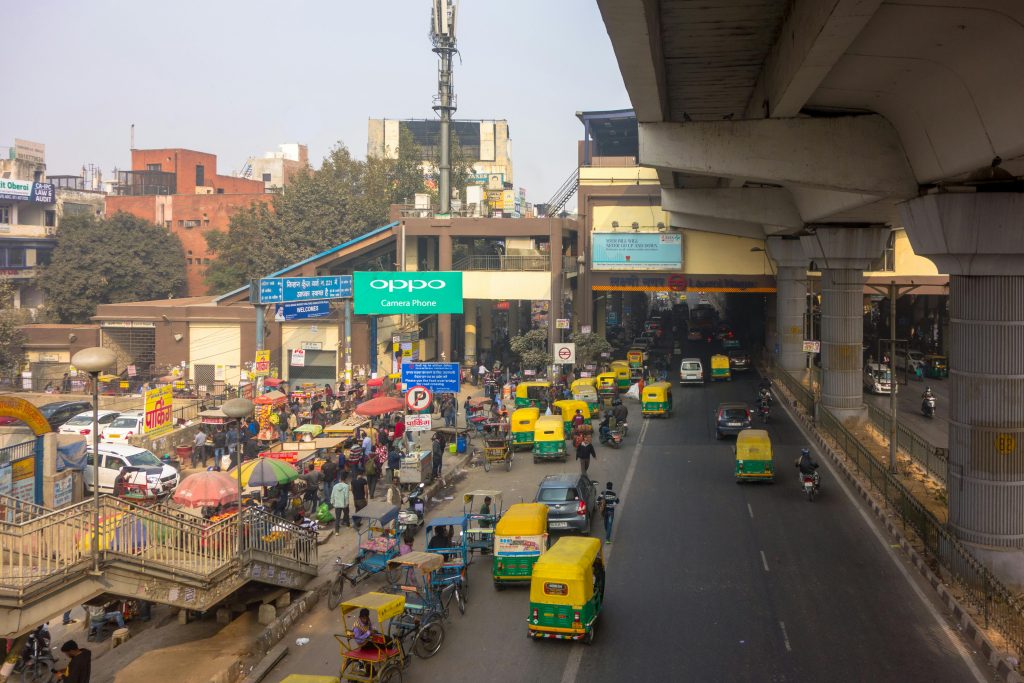
Building the necessary infrastructure is just the first step. Delhi has failed to provide a reliable and comfortable service experience to users even after numerous attempts. The maintenance of footpaths and cycling lanes requires significant improvement, and doing so can lead to substantial gains in local air quality. Pedestrian infrastructure and roads should also be treated with equal importance in an integrated manner, to prevent roads being incessantly widened at the cost of footpaths. Developing pedestrian and cycling infrastructure can also improve economic opportunities, promote safety and encourage the city to get healthier.
The next step will be to address the high levels of exposure to air pollution experienced by pedestrians and cyclists. The most direct solution is to reduce the absolute number of vehicles on the road. Disincentivising the purchase and use of personal vehicles (via congestion taxes, for example) will seem far less coercive if non-motorised and transit alternatives of a similar quality and reliability are made available simultaneously.
The quality of Delhi’s bus services will have to be improved. The introduction of car-free zones, such as the one in the high-footfall area of Chandni Chowk, is an important step in the right direction. Better emissions norms, effective enforcement of said norms and eventually, a complete shift to EVs will also achieve a significant reduction in emissions load.
Finally, improving the condition of existing roads will ensure their optimal utilisation. Ensuring effective drainage, robust pavements, and effective traffic management can improve the flow of traffic without widening roads.
These solutions are not new. They have been tried and tested in numerous contexts around the globe. These experiences all point to the same conclusion – that Delhi has to make these simple yet painful decisions in order to build a city that serves its people and not its vehicles.
Footnotes
- Submission made by the Delhi Government dated 19 February, 2024 under the Original Application No. 687/2023. Copy available with authors. ↩︎
- Includes all registered buses in the city, including but not limited to Delhi Transport Corporation and cluster buses, as shown in Table 2. ↩︎
- These are the vehicles de-registered by the Delhi Government as of 2023, following the ban on old diesel and petrol vehicles. As per the Delhi Statistical Handbook 2023, of the 62 lakh de-registered vehicles only 1.4 lakh vehicles were scrapped and a further 6.2 lakh vehicles were given a No Objection Certificate for operating in other states. The fate of the remaining 55 lakh vehicles is unclear. ↩︎
- Data sources for population numbers are the same as in Table 1. ↩︎
- The definition of what an SUV is is not exactly clear. Many Indian SUVs can also be labelled as cross-overs between a hatchback and an SUV. However, it is safe to assume that almost all SUVs in India are larger and heavier than hatchbacks and most sedans. ↩︎
- Jevons paradox states that as the use of a resource becomes more efficient, the demand for that resource increases as well, leading to an increase in overall resource use. In Delhi, this can be seen in the form of improvements in roads leading to an increase in vehicle ownership, which in turn leads to the further crowding of roads. The paradox was first described in the book The Coal Question. ↩︎
Microplastics: An Overlooked Contributor to India’s Air Pollution
On August 20, 2024, India’s National Green Tribunal (NGT) directed the Central Pollution Control Board (CPCB) to consider including microplastics – plastics with a diameter ranging from 1μm to 5mm – in the list of pollutants regulated under the National Ambient Air Quality Standards (NAAQS). These standards, last updated in 2009, set permissible limits on air pollutants harmful to human health, such as PM2.5 and PM10. However, microplastics are notably absent from this list of pollutants, despite growing research linking them to severe health risks, including damage to the nervous, circulatory, and immune systems, as well as cancer and reproductive disorders.
The exclusion of microplastics from NAAQS is just one example of the broader issue. India currently lacks a specific, comprehensive policy to address airborne microplastic pollution. Existing guidelines like the Solid Waste Management Rules 2024, and the Plastic Waste Management Rules 2024 also do not address the challenges posed by airborne microplastics. As a result, these pollutants remain largely unmonitored and unmanaged.
Compounding this issue is the limited research on airborne microplastics, stemming from the complexities involved in detecting and analysing these tiny particles in the atmosphere. Without adequate research and policy focus, the impacts of airborne microplastics on public health and the environment could continue to go unaddressed.
What then can India do to tackle this emerging pollutant, and how can we effectively mitigate its potential harm?
What are airborne microplastics, and how do they affect our health?
What are microplastics?
Plastics with a diameter ranging from 1μm to 5mm are called microplastics. They are of two types: primary microplastics, which are designed and manufactured for commercial use, such as microbeads in cosmetic and health care products or synthetic microfibers that shed from clothing; and secondary microplastics, which are created when larger plastics break down into smaller pieces due to weathering and degradation. Tyre wear also contributes to the release of microplastics into the environment, especially as part of non-exhaust pollution from traffic . Additionally, fast fashion, which relies on polyester, a material that is cheap, and readily available but is non-biodegradable, has also emerged as one of the largest contributors to microplastics from textiles.
How do microplastics become airborne?
While most studies have focused on microplastics in oceans and waterways, recent research indicates that microplastics can also become airborne, enabling rapid transboundary and long-range transport. This means that populations kilometers from the pollution source can be affected.
Microplastics become airborne through urban dust and soil, with their presence found in sedimented dust and fine atmospheric particles, as well as in airborne dust and both wet and dry deposition in urban and rural areas across the globe. Additionally, microplastics present on land or in water can easily become airborne, resulting in a cyclical exchange between land, water, and air. This creates the potential for a never-ending plastic cycle, making the removal of microplastics from the environment almost impossible.
Given their minuscule size, microplastics have been found “on mountaintops, in Antarctic ice cores, throughout our oceans, and in the bloodstream of human beings”.
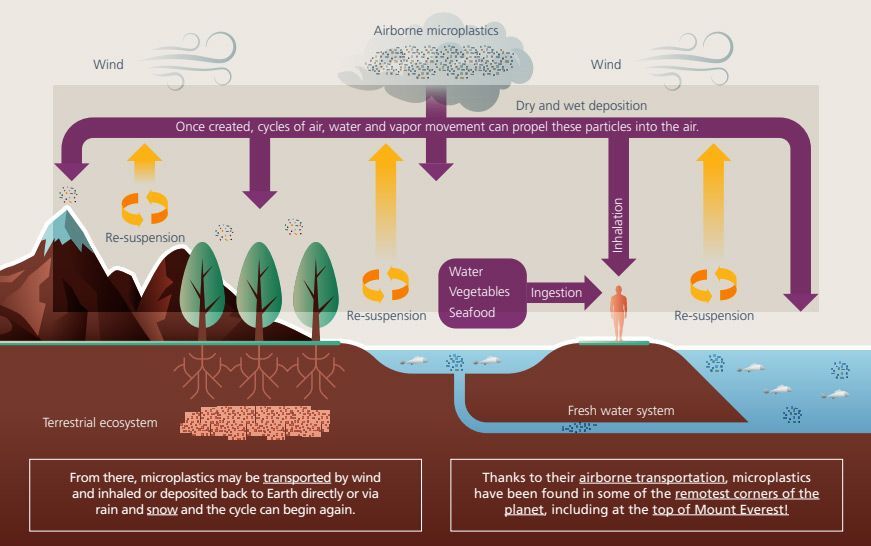
Health effects of airborne microplastics
Research shows that the small size of microplastics allows them to penetrate deep inside the human body, which induces respiratory issues and may even migrate to other organs. Humans are exposed to airborne microplastics through inhalation, ingestion, and potentially through skin contact. The impact of inhalation depends on size: some remain in the upper respiratory tract, while others can reach deep into the lungs. Their polymeric and sometimes fibrous structure makes them difficult to eliminate from the respiratory system. An average person can inhale up to 272 microplastic particles daily during light activities, with polyester fibers being a common source for clothing, furniture, and carpets.
Airborne microplastics pose an even greater threat to human health and the environment. Not only can they cause direct harm, but they also act as a trojan horse by carrying harmful chemicals and pathogens. As microplastics remain suspended in the air, they increase the risk of human exposure through inhalation of fine particles and inadvertent ingestion of contaminated geo-solids. This creates a complex and persistent threat to both human health and the environment, making their removal nearly impossible.
Moreover, microplastics serve as surfaces for microbial communities to thrive. This “plastisphere” of microorganisms, such as bacteria, enables them to survive in harsh environments and travel across ecosystems. Ingesting these microbes can lead to gastrointestinal infections, fever, and chills.
Why India needs to focus on microplastics
India faces a significant challenge with microplastics, primarily due to two interconnected issues – its position as the largest producer of plastic and its inability to effectively manage and recycle plastic waste.
1. A big plastic producer that imports waste: India is one of the most polluted countries in the world, with 42 out of the 50 most polluted cities in terms of air quality located within its borders. India is also the largest producer of plastic and plastic products, emitting about a fifth of all plastic waste generated in the world.
Despite its massive plastic production, India has been importing plastic waste from countries like China, Italy, Japan and Malawi, primarily to supply plastic processing units. This reliance on imports stems from India’s lack of adequate recycling infrastructure, starting with the first step of waste segregation. Imported plastic waste, already segregated, is easier and cheaper to process.
While a ban on plastic waste imports from these countries was imposed in 2019, the Ministry of Environment, Forest, and Climate Change partially lifted it in 2022, allowing the import of only PET bottles and flakes from countries like the US, Canada, and Germany. The reason cited for this allowance was the shortage of plastic waste in India, which was financially impacting processing units. The new policy allows the “import of PET flakes/bottles up to 50% of the production capacity of permitted firms”. Critics, however, have pointed out that it is not a shortage of PET waste, but rather the inadequate collection and segregation of plastic waste within India that leads to the ‘shortage’.
2. Inadequate plastic waste management: India’s capacity to manage plastic waste is alarmingly insufficient: of the 26,000 tonnes of plastic waste generated daily, only 8% of it is recycled. As of 2019, 23% of the waste generated ends up in landfills, 3% is incinerated and about 29% is mismanaged.
Plastics, when incinerated, can emit dioxins and other organic pollutants that lead to reduced visibility and worsened AQI. Poor recycling practices lead to increased air pollution as microplastics can become airborne through resuspension, further exacerbating health risks associated with pollution. This mismanagement of plastic waste thus contributes significantly to an ongoing air pollution and health crisis in the country.
Despite a 2022 ban on single-use plastics, enforcing the use of plastics thicker than 120 microns, this measure covers only about 10-15% of plastics in circulation. This highlights India’s challenge in effectively managing both the production and disposal of plastic.
NGT’s push for action on microplastics
August 2024 was not the first time the NGT asked the CPCB to look into microplastics as a possible risk factor for ill health and a contributor to the country’s poor air quality.
In 2021, the NGT took suo motu cognizance of possible microplastic pollution in the air, following the publication of a news article based on a research study conducted in Chennai that assesses the extent of microplastic pollution in the road dust of the city.
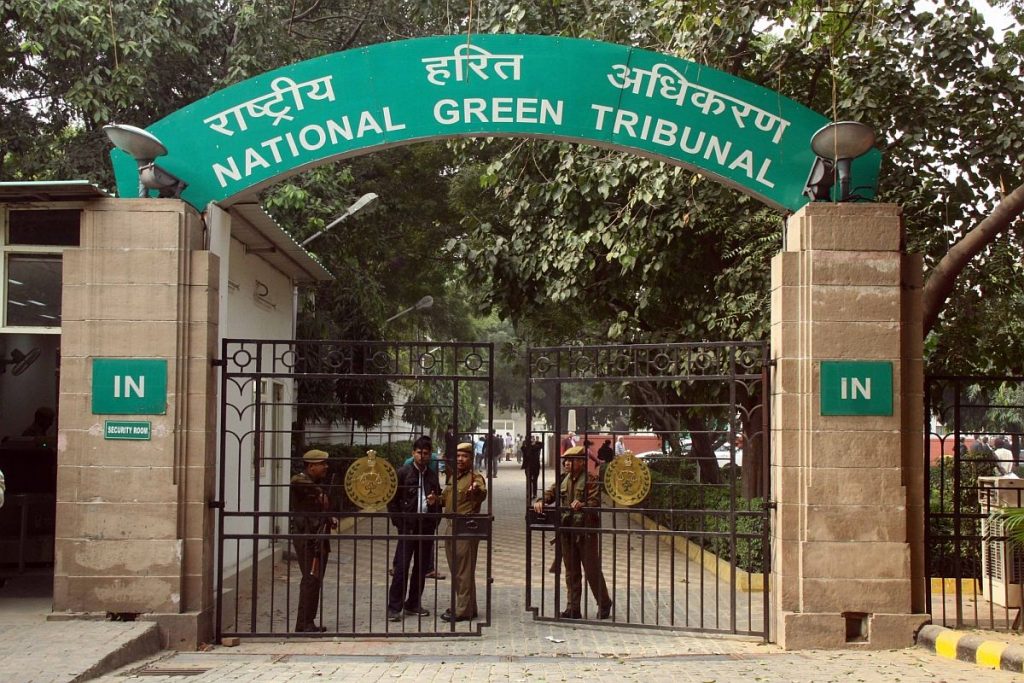
The NGT instructed the Tamil Nadu Pollution Control Board (TNPCB) to form an expert committee to assess the issue and provide recommendations. The committee confirmed the presence of microplastics in the air and groundwater around two Chennai landfill sites. It also emphasised the need for further evaluation by the National Environmental Engineering Research Institute (NEERI) to quantify environmental damage and restoration costs. (NGT OA 99/2021SZ). In a 2022 order, the NGT designated the CPCB as the nodal coordination agency to address and bridge this research gap.
In response, the CPCB, in 2023, acknowledged the existence of microplastics in the water and air and concluded that a standard method for sampling and analysis of microplastics in the environment is essential along with more research on the health effects of the pollutants.
Challenges to addressing airborne microplastic pollution in India
The recent Plastic Waste Management (Amendment) Rules, 2024 have introduced the term “biodegradable plastics”, defined as plastics that degrade biologically in soil or marine environments without leaving harmful residues, including microplastics. However, the amendments do not clarify how to identify microplastics or the necessary level of degradation required for a product to be considered biodegradable.
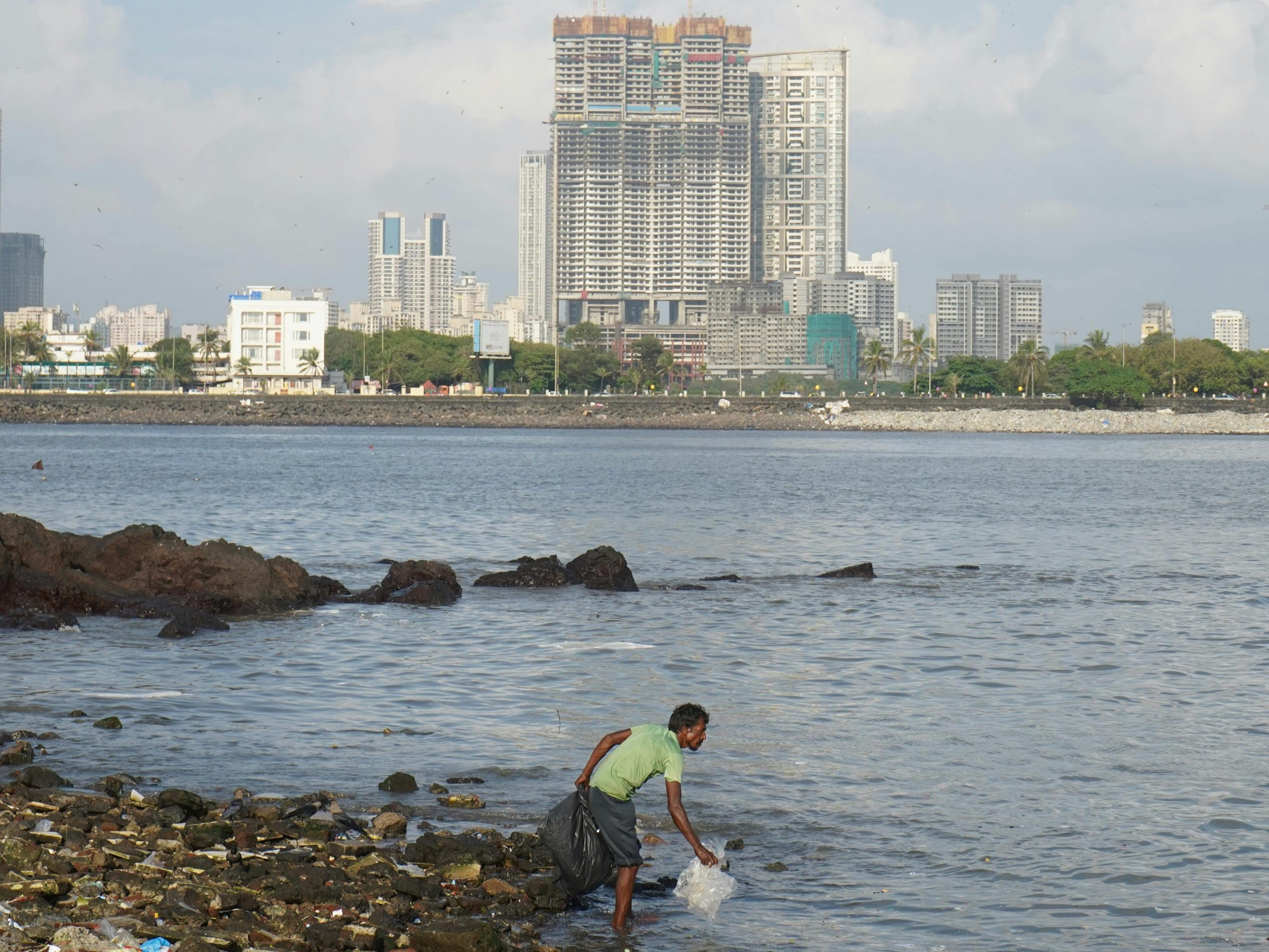
In 2023, the Bureau of India Standards stated that manufacturers claiming 100% biodegradable plastic may be “tantamount to misleading advertisement”, and advised the Ministry of Environment against certifying such claims. With the new rules however, challenges arise in certifying biodegradable plastics, as manufacturers often face difficulties obtaining provisional certificates from the Central Pollution Control Board (CPCB) due to unclear degradation criteria.
Another major challenge is the paucity of research in the sphere of microplastics. Research in airborne microplastics, in particular, is sparse due to challenges in detecting and analysing microplastics in the air. These challenges come from different factors: first, microplastics can come in many shapes, sizes, and types of plastic, which makes it hard to measure and identify them using regular testing methods. Second, other pollutants in the air can make it tough to find and analyse microplastics during sampling. Lastly, changes in the environment can affect their stability, and how microplastics behave in the air, making it even harder to detect and study them.
Possible solutions to manage and reduce airborne microplastics
As discussed in the above section, India faces numerous challenges in managing plastic waste and mitigating airborne microplastic pollution. Below are a few actionable solutions that target different aspects of the problem:
1. Building a robust research foundation: Along with a paucity of rigorous, collaborative research, there is also a lack of standardisation/unanimity of the concepts and units within the community. A comprehensive risk analysis of microplastics’ impact on human health is crucial to understanding the implications of this emerging pollutant.
With a robust research foundation, policymakers can establish clear standards and guidelines for microplastics. Understanding the lifecycle of these particles and developing effective removal and disposal strategies are essential. This collaborative effort will enable the creation of comprehensive regulations to effectively address the challenges posed by microplastic pollution.
2. Enhancing waste segregation at source: What should be done about the plastic that already exists, 3.46 million tonnes of which ends up in landfills or as marine litter? A crucial first step is the need to segregate waste at source (which includes households). Currently, only 30% of waste is properly sorted, causing valuable materials like plastics and metals to end up in landfills.
The Solid Waste Management Rules of 2016 mandate ‘waste generators’ to segregate and store organic waste and recyclable waste separately before handing it over to waste pickers. However, poor compliance undermines recycling efforts, as mixed waste reduces the quality and quantity of recyclables. Effective segregation ensures that plastic products can be effectively processed and recycled, reducing the amount of plastic waste that ends up in landfills. This is crucial because landfill leachate – the liquid formed when water seeps through a landfill – can contain harmful substances, including organic matter, heavy metals, and chemicals that threaten the environment and human health. In landfills, larger plastics break down into microplastics, which can leach into groundwater or become airborne.
Landfills in India pose another problem: they are severely over-capacitated and burdened. The Bhalswa and Ghazipur landfills in Delhi, for example, have been operating beyond capacity since 2002, highlighting the urgent need for improved waste management. However, even the introduction of Waste-to-Energy plants, which are touted as a magic solution to the country’s waste problems, may not prove to be as effective if proper segregation of waste at source is not ensured. Mixed waste has a low calorific value and high moisture content which can emit toxic substances when burned, thus contributing to local air pollution.
3. Raising public awareness and empowering stakeholders: Increasing public awareness of waste segregation and recycling is essential for better outcomes, as community participation fosters responsible disposal habits. To start, there is a need to create more awareness and education on the harmful effects of using single-use plastics of all types.
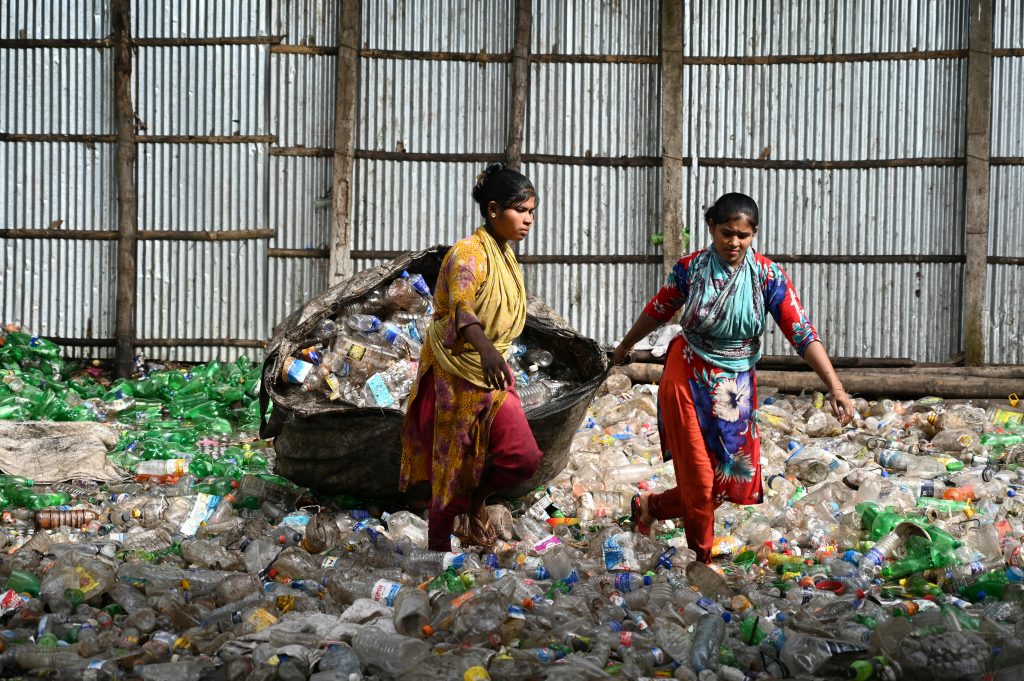
Empowering stakeholders can help enforce the practice of segregation, while also helping disseminate important solid waste management knowledge. The new Draft Solid Waste Management Rules, 2024, empower waste collectors to refuse to pick up unsegregated waste. They may also levy fines/penalties on unsegregated waste. The rules also provide a ‘polluter pays’ principle (environmental compensation/penalty levied on entities/persons failing to comply with the new rules). The Rules also expand the duties of Urban Local Bodies and state governments, especially concerning refuse-derived fuel plants which process non-recyclable waste into fuel for industrial use.
4. Incentivising recycling practices: Incentivising effective practices can further improve results. For example, Taiwan’s market-incentive recycling system charges producers recycling fees while subsidising local governments and businesses involved in waste collection. Similar programs that train rag-pickers and provide fair compensation can boost recycling rates.
There is an acute paucity of a well-functioning garbage collection infrastructure. Incentivising the supply chain can help induce good waste disposal habits and decrease the demand for landfills and other unregulated waste disposal areas.
Establishing decentralised waste processing units within cities can also improve municipal solid waste management. These units facilitate on-site segregation, composting, and biomethanation, reducing the burden on central landfills and limiting the plastic waste that may otherwise end up in landfills. There is a dire need to make current waste management systems more efficient and in tune with the waste generation and disposal realities of the world’s largest democracy.
Towards a circular plastic economy
Plastics are now so pervasive that the Earth may never be completely plastic-free. Human civilisation now exists in the “Plasticene” epoch. Concerted efforts to reduce plastic consumption and remove existing waste are the need of the hour, and a circular plastic economy is a crucial long-term solution. This approach focuses on reintroducing plastics into the manufacturing process for reuse rather than disposal, which requires a fundamental redesign of business models, materials, and packaging.
Additionally, the entire plastics supply chain needs remodelling and greening, with compostable, biodegradable plastics at the forefront. But are biodegradable plastics truly entirely biodegradable? This question has prompted large-scale research in conceiving a bioplastic that can completely decompose. Biodegradable plastics, such as PHAs (polyhydroxyalkanoates) and PLAs (polylactic acid), are essential for this shift. While PHAs are fully biodegradable, PLAs require industrial composting to degrade properly. However, these bioplastics can be expensive, and hence, are scarce in the market system, driving researchers to seek cost-effective solutions. It is also important to note that not much of research on biodegradable plastics is centred in the Indian context.
Government support is vital to build effective collection infrastructure and create self-sustaining funding mechanisms that foster a regulatory environment conducive to a circular plastic economy. The private sector – the producers, importers, and brand owners – that form part of the existing plastic supply chain also bears the burden of making small switches to reduce plastic use. This includes, in large part, plastic-free packaging of goods. This will help tackle the burden of existing plastics, help keep them in the supply chain, and reduce reliance on new plastics.
A circular plastic economy plays a critical role in addressing microplastic pollution. Redesigning products for longevity and recyclability significantly reduces the fragmentation of plastics into microplastics. Additionally, incorporating biodegradable alternatives can mitigate microplastic formation by ensuring that any residual materials break down more effectively rather than persisting in ecosystems.
Ultimately, addressing the presence and impacts of microplastics needs to be a collaborative effort involving private sector entities, government bodies, scientific communities, and civil society stakeholders.
Pollution Regulation in India: Institutional and Legislative Conundrums
Managing air quality: Answer is in airsheds
Explained: What Is PM 2.5 And How Will It Affect Our Health?
Air Quality Regulation
Abstract
This chapter in ‘The Oxford Handbook of Environmental and Natural Resources Law in India‘ unpacks the key components of air quality regulation in India. It provides an overview of the regulatory and institutional framework that governs some of the major sources of air pollution in the country, focusing primarily on national laws and policies. It identifies four main challenges in regulating air quality: weaknesses in regulatory design; capacity and capability constraints in regulatory institutions; flawed policy-making; and the inadequacy of hard regulation in delivering cleaner air. The chapter concludes by suggesting certain pathways for reform: through legal amendments, institutional strengthening, and development of technical capacity for sound policy-making.
Read more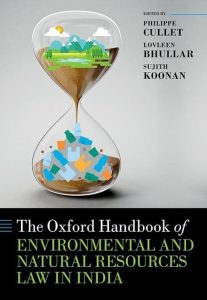
Ambient air pollution and daily mortality in ten cities of India: a causal modelling study
Read the full study here
Summary
About this study
This is the first multi-city study in India that examines the association between short-term exposure to PM2.5 (particulate matter <2.5 microns in size) and daily mortality during the time period 2008-2019. We analyse the impact of these short-term PM2.5 exposures across cities in various geographic regions and climatological zones of the country to generate new insights that are relevant for policy.
What did we do?
We studied this in 10 cities (Ahmedabad, Bengaluru, Chennai, Delhi, Hyderabad, Kolkata, Mumbai, Pune, Shimla and Varanasi) between 2008 to 2019. We used a two-stage approach by first evaluating the effects of PM2.5 on mortality in each city individually, and then combining the results for all 10 cities. We also used a causal modelling approach that enabled us to isolate the effect of locally generated air pollution (such as contributions from local transport and waste burning) on mortality.
What data did we use?
We obtained daily counts of mortality from death registries of the 10 cities covered in this study for periods ranging from 3-7 years per city. Our final analysis included over 3.6 million deaths that occurred in these cities over the 2008-2019 study period. Given the sparse nature of air pollution data across many cities, we leveraged our previously developed machine-learning based exposure model that combined data from regulatory monitors, satellites, meteorology and other sources to generate PM2.5 exposure data with a high level of detail in both space (location) and time (duration).
What did we find?
We found that for every 10 μg/m3 increase in the average PM2.5 exposure over a two-day period, the daily mortality across the ten cities increased by 1.42% (Figure 1A). When using our causal modelling approach that isolated the effect of locally generated air pollution, we observed a much stronger effect on daily mortality of 3.57% (Figure 1B).
Our findings also confirmed that the risk of mortality rose more quickly at lower PM2.5 levels but plateaued as levels increased. Significantly, we found mortality risk to be very high (2.65%) even when analysing days with PM2.5 levels below the current Indian NAAQS standard of 60 μg/m3.
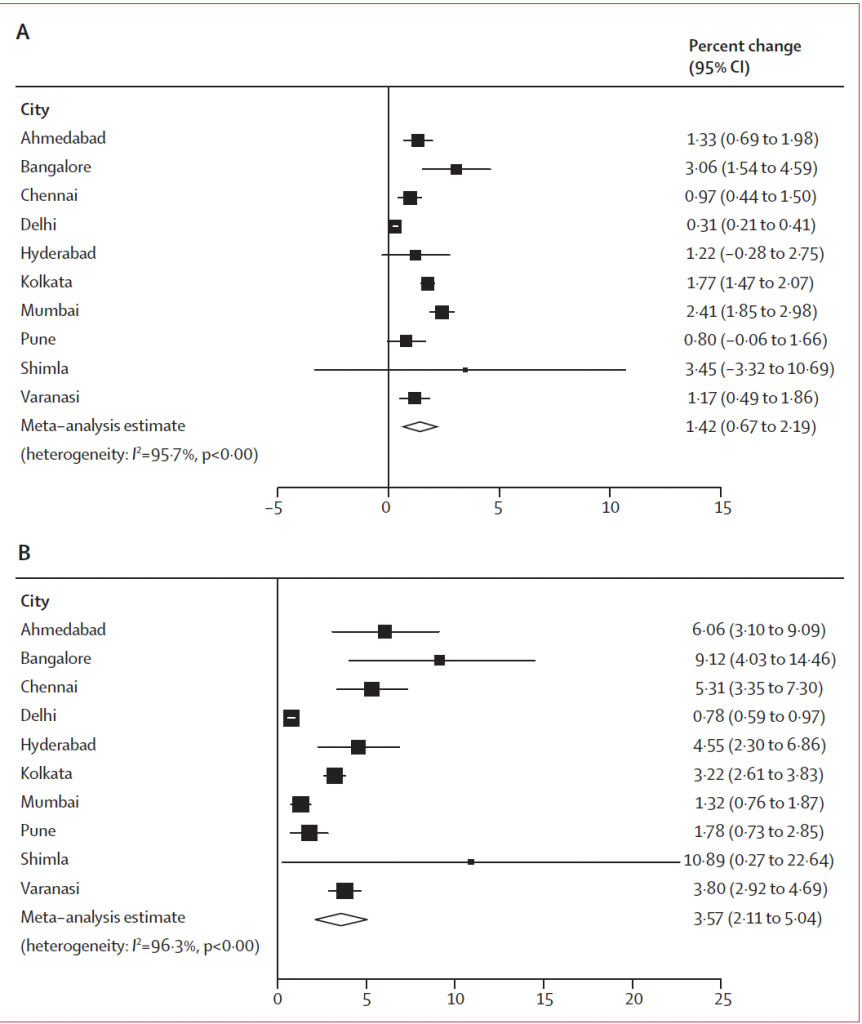
Figure 1: City specific estimates of the association between short-term PM2.5 and mortality per 10 μg/m3 increase using conventional time-series approach (A) and causal modelling (B).
City-specific impacts
During our study period, we found that 7.2% (95% CI: 4.2-10.1) of all deaths across all 10 cities could be linked to PM2.5 exposure surpassing the WHO guideline value of 15 μg/m3. Delhi had the highest proportion at 11.5% (equating to ~12,000 deaths per year), while Shimla had the lowest at 3.7% (59 deaths per year) between 2008-19.
Over 33,000 deaths each year were attributable to short-term PM2.5 exposures with a significant number of deaths were observed even in cities not considered to have the problem of high air pollution (column 4 in table 1 below).
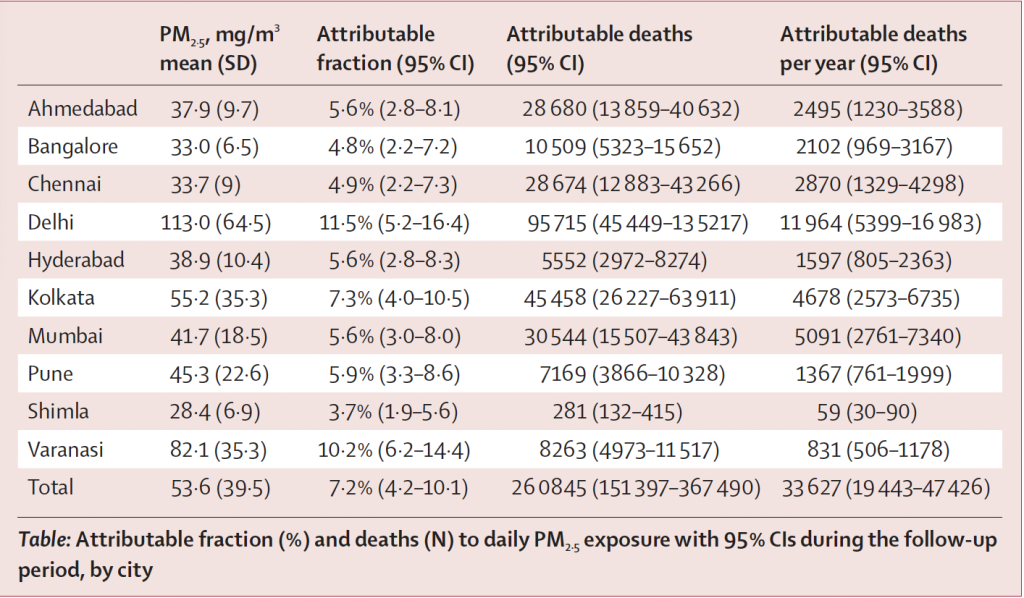
Table 1: Fraction of deaths (%) and number attributable to short-term PM2.5 exposure by city
Why do cleaner cities have higher effect estimates?
In our results, we see that cities such as Bengaluru and Shimla which have relatively lower levels of air pollution showed stronger effects. This is likely due to the sharp increase in risk at lower levels of exposure which plateaus at higher levels which are unlikely to be experienced in these cities (figure 2 below).

Figure 2: Effect of short-term exposure to PM2.5 on daily mortality at lower thresholds
What is the causal modelling approach we used and what new insights does it provide?
We used an instrumental variable approach to generate causal effects of locally generated air pollution. To do this, we identified three variables or “instruments” – planetary boundary layer height or mixing height, wind speed and atmospheric pressure – that are directly related to variations in daily air pollution, but are unrelated to daily deaths except through air pollution changes. Through this approach, we isolate the effect of locally generated air pollution since these three instruments are linked to dispersal and transport of air pollution.
The results show us a much higher effect estimate of 3.57% (95% CI: 2.11-5.04), indicating that we might have previously underestimated the effect of short-term air pollution exposures on mortality. The results also highlight the need for (a) greater focus on dispersed local sources of air pollution including transport, waste burning, DG sets, etc., and (b) greater research to unpack deeper insights into the potentially compounding effects of multiple locally generated pollutants (such as PM2.5 and oxides of nitrogen).
What are the implications for national and local air pollution policy?
There are several key takeaways from this study for the development and implementation of health-focused air pollution policy across India:
1. The combination of a steep increase in risk at lower exposure levels, along with significant effects even below the NAAQS standard of 60 μg/m3, show that air pollution is a problem across the country, and even in cities otherwise considered less polluted or to have been meeting air quality standards. Remedial action to mitigate air pollution should therefore expand beyond current “non-attainment” cities.
2. The current NAAQS are substantially higher than they should be as significant effects are seen well below current guideline value for daily exposure to PM2.5 of 60 μg/m3. As the NAAQS are currently under revision, the development of appropriate health-based thresholds can be informed by integrating these results into the standard-setting exercise.
3. Focus cannot only remain on seasonal high exposure events such as during winter, requiring action on all sources year-round. Graded Response Action Plans focused solely on these extremes would only yield marginal benefits with respect to daily mortality, with negative health effects continuing to accrue all year-round even at much lower exposure levels.
4. Our causal analyses highlight the need for greater attention on the numerous dispersed sources of local air pollution across cities including from transport and waste burning among others. These are more challenging to address, but could yield substantial health benefits.
What gaps remain in our understanding?
While our study had several strengths, we also encountered challenges that lead to certain gaps in our understanding of this relationship. First, the lack of accurate information on causes of death across all cities and the lack of data on sex, age and other individual-level variables for some cities made it challenging to generate deeper insights for both policymakers and health professionals. We anticipate the need for the strengthening of health data collection and quality to facilitate the generation of these insights. Second, the lowest PM2.5 concentration observed during the entire study period across any of the cities was 17.1 μg/m3, which therefore served as the counterfactual for our analyses. Evidence from other countries has documented considerable health harms even below these levels, and those data must be considered when identifying appropriate health-based thresholds and interventions.
Unified action needed to tackle extreme heat and air pollution
Synergistic Impact of Air Pollution and Heat on Health and Economy in India
Abstract
In recent years, developing countries have been grappling with two significant environmental challenges—air pollution and increasing temperature. The impact of these issues on health and the economy has been extensively studied, leading to a growing body of literature highlighting their individual consequences. Understanding the synergistic effect of air pollution and increasing temperature on human well-being is a new topic of research that has received little attention in developing nations.
This chapter, published in the book The Climate-Health-Sustainability Nexus: Understanding the Interconnected Impact on Populations and the Environment (Springer), aims to address this gap in knowledge by thoroughly examining the existing literature to understand the combined influence of these environmental stressors and their implications for global health and the economy. We look into the trends of global exposure to air pollution and temperature and explore the pathophysiological pathways through which air pollution and increasing temperature affect human health. Our findings point to a severe lack of evidence on the synergistic impact of the two on human health in India. In the face of increasing climate vulnerability, the Indian economy is exposed to large degrees of risk through direct and indirect costs. It is crucial that the interplay between air pollution and heat be studied in depth. By dissecting these pathways, policymakers and healthcare professionals can develop more targeted strategies to mitigate the combined impacts of both on public health.
Finally, we focus on the health and economic co- benefits of implementing interventions to reduce air pollution and combat heat waves. By addressing these challenges in tandem, there is an opportunity to achieve greater overall benefits for both human well-being and economic prosperity. Through a deeper understanding of these interconnected challenges, we can strive for a healthier and more sustainable future for all, especially for those most vulnerable to poor environmental quality.
